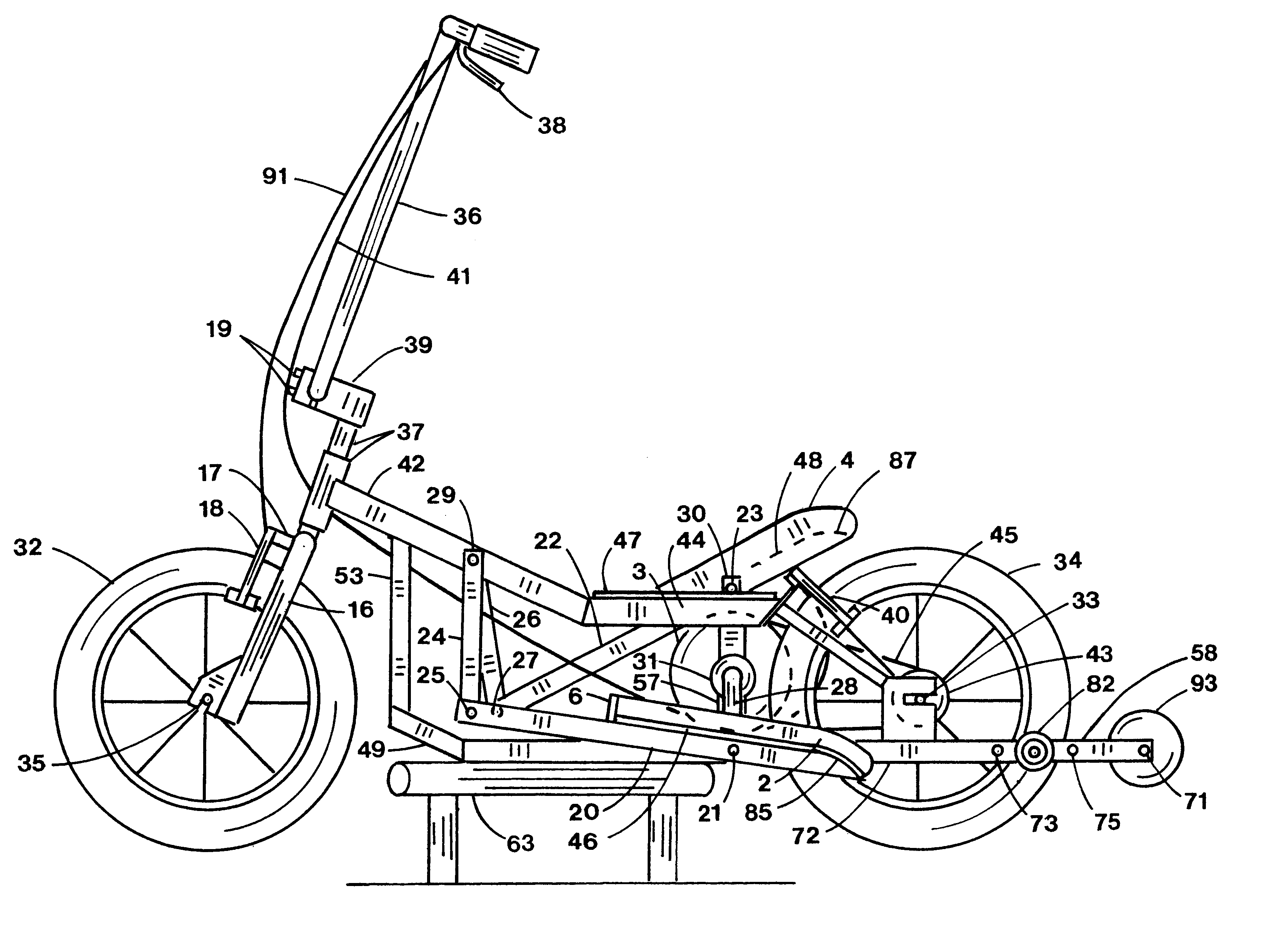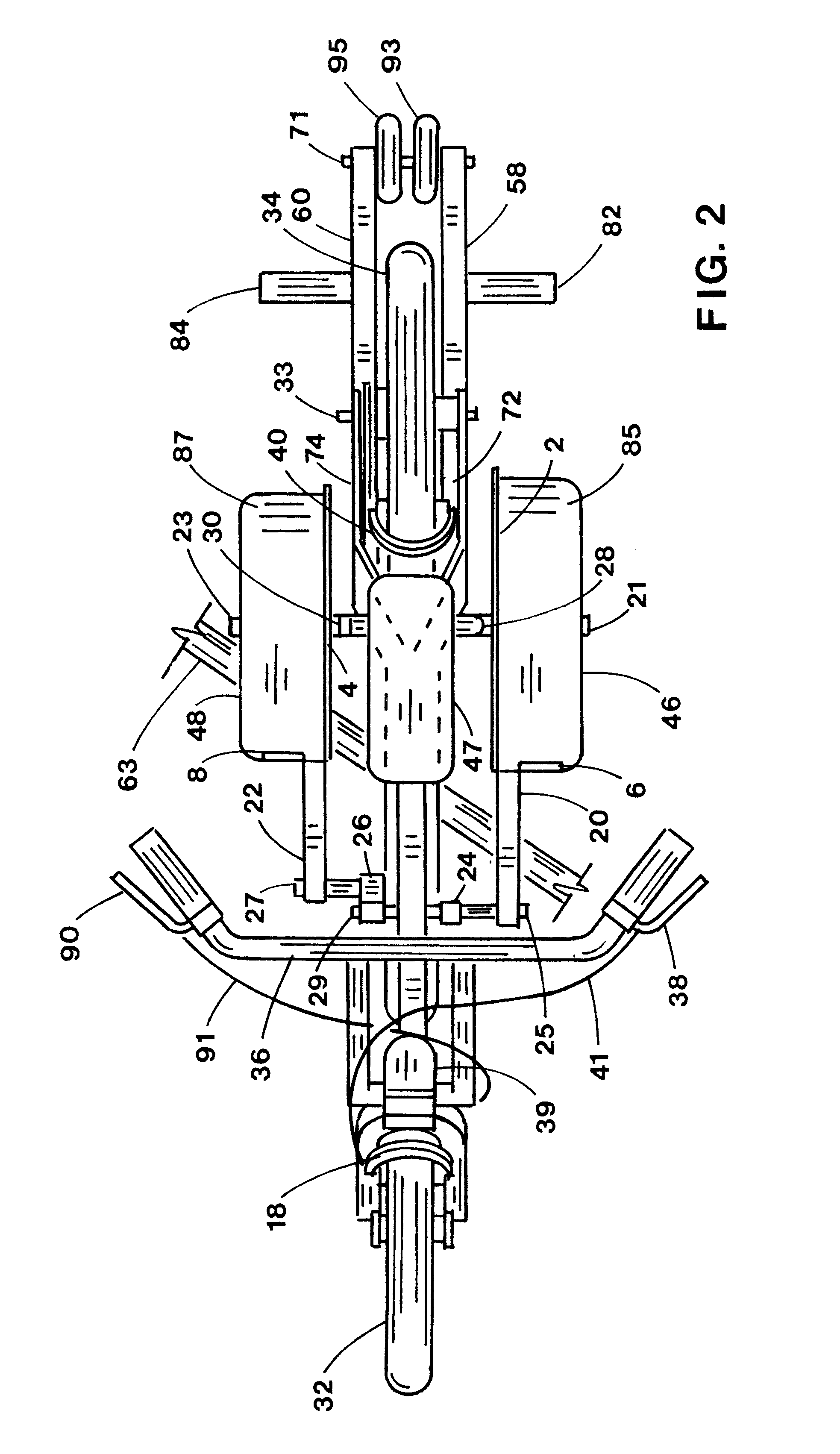Exercise scooter with stunt features
a technology of scooters and features, applied in the direction of foot-driven levers, gymnastic exercise, sport apparatus, etc., can solve the problems of slow scooter speed, insufficient support of mostly stand-up operation, and inability to fully support the heel of the foot, etc., to achieve a stable foot position and facilitate the effect of achieving
- Summary
- Abstract
- Description
- Claims
- Application Information
AI Technical Summary
Benefits of technology
Problems solved by technology
Method used
Image
Examples
Embodiment Construction
Referring to the drawings in detail, pedals 46,48 are shown in FIG. 1 in generally their highest and lowest positions of the preferred embodiment. Pedals 46,48 are supported by foot support members 20,22. Cranks 28,30 are maintained generally 180 degrees apart and are rotatably connected to crank housing 31. Foot support members 20,22 are connected to cranks 28,30 at crank pivots 21,23 and to rocker links 24,26 at pivots 25,27. Rocker links 24,26 are connected to frame 42 at pivot 29.
First wheel 32 is rotatably connected to fork 16 at axle 35. Fork 16 is rotatably connected to fork housing 37 to accommodate steering. Knobs 19 lock clamp 39 to secure handlebar 36 to fork 16. When knob 19 is loosened, handlebar 36 may be folded down for stowage.
Second wheel 34 is rotatably connected to frame members 72,74 by axle 33. Sprocket 43 is connected to wheel 34 with a one-way clutch (not shown). Sprocket 3 is attached to cranks 28,30 and is engaged with sprocket 43 by chain 45. Frame members ...
PUM
 Login to View More
Login to View More Abstract
Description
Claims
Application Information
 Login to View More
Login to View More - R&D
- Intellectual Property
- Life Sciences
- Materials
- Tech Scout
- Unparalleled Data Quality
- Higher Quality Content
- 60% Fewer Hallucinations
Browse by: Latest US Patents, China's latest patents, Technical Efficacy Thesaurus, Application Domain, Technology Topic, Popular Technical Reports.
© 2025 PatSnap. All rights reserved.Legal|Privacy policy|Modern Slavery Act Transparency Statement|Sitemap|About US| Contact US: help@patsnap.com



